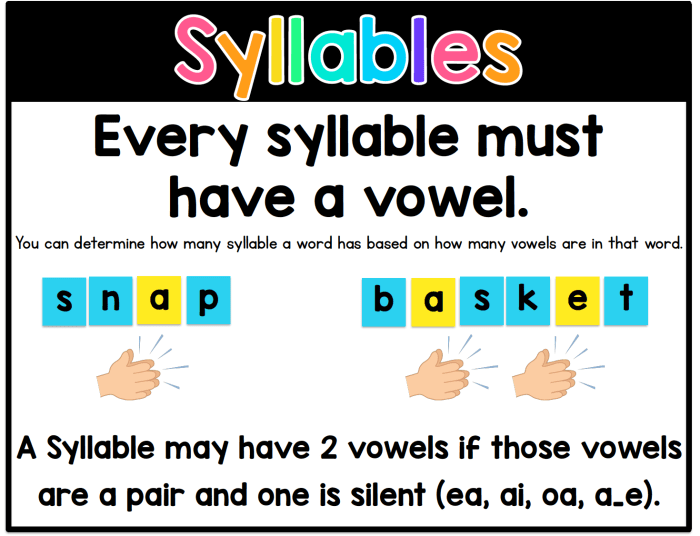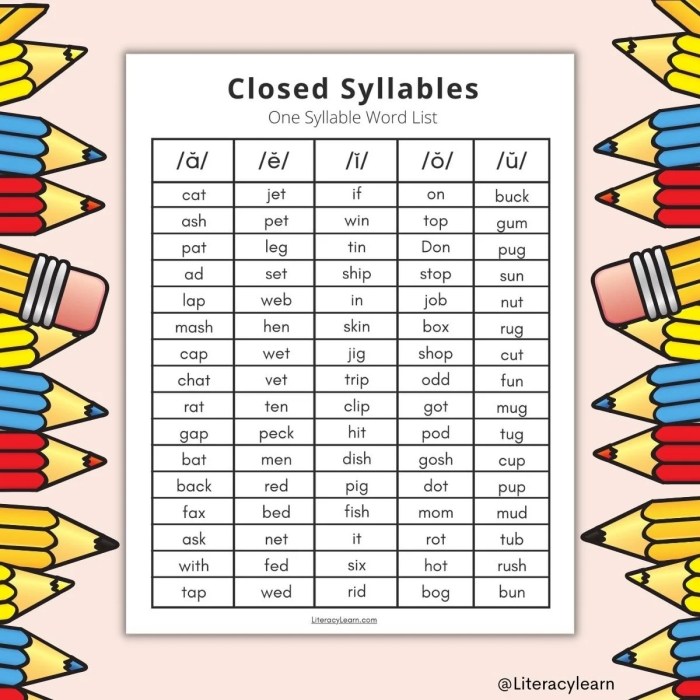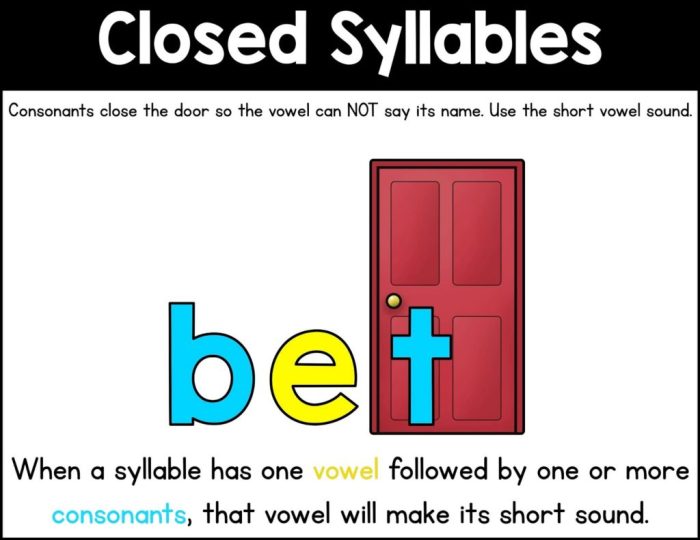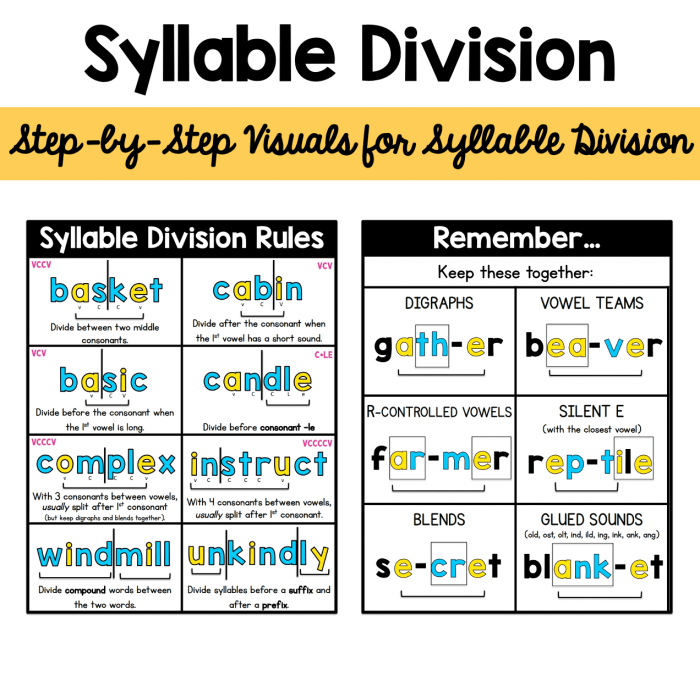Is wax a closed syllable – In the tapestry of language, syllables dance and weave, creating the rhythmic patterns that shape our speech. Among these intricate units, closed syllables stand out, intriguing linguists and language learners alike. Embark on a journey into the world of phonology as we unravel the secrets of closed syllables, taking “wax” as our enigmatic guide.
Closed syllables, like hidden treasures, conceal their vowels within a protective embrace of consonants. In the case of “wax,” the consonant “x” serves as a guardian, locking the vowel “a” within its embrace, creating a distinct sound that sets it apart from its open syllable counterparts.
Definition of a Closed Syllable

A closed syllable is a syllable that ends with a consonant sound, preventing the vowel sound from being prolonged.
In other words, a closed syllable is one where the vowel sound is “trapped” or “stopped” by a consonant at the end of the syllable, creating a short and abrupt sound.
Phonological Structure of Wax

The word “wax” is composed of one syllable. It is considered a closed syllable because it ends in a consonant sound, specifically the “x” sound.
Syllable Structure, Is wax a closed syllable
The syllable structure of “wax” can be represented as follows:
- Onset: w
- Nucleus: a
- Coda: x
The onset is the consonant sound that precedes the vowel, the nucleus is the vowel sound, and the coda is the consonant sound that follows the vowel.
Comparison to Open Syllables

Closed syllables differ from open syllables in terms of their structure and pronunciation. Open syllables end with a vowel sound, while closed syllables end with a consonant sound.
Here are some examples of open syllables:
- ma
- be
- so
- ti
- ru
These syllables all end with a vowel sound, which means they are pronounced with an open mouth. In contrast, closed syllables end with a consonant sound, which means they are pronounced with a closed mouth.
Here are some examples of closed syllables:
- bat
- bed
- sit
- cot
- run
These syllables all end with a consonant sound, which means they are pronounced with a closed mouth.
The difference between open and closed syllables can affect the pronunciation of words. For example, the word “bat” is pronounced with a short “a” sound, while the word “bate” is pronounced with a long “a” sound. This is because the closed syllable in “bat” causes the vowel sound to be shortened.
Is wax a closed syllable? Well, let’s hop over to a different topic for a moment and explore the fascinating world of frogs and toads of Ohio . These amazing creatures come in a variety of shapes and sizes, and their habitats range from ponds and marshes to forests and grasslands.
Now, back to our original question: is wax a closed syllable? The answer is yes, because it ends in a consonant sound.
Pronunciation and Stress

The pronunciation of “wax” reflects its closed syllable structure. The vowel sound is short and ends abruptly, creating a distinct closed sound.
Stress plays a crucial role in determining the pronunciation of closed syllables. In “wax,” the stress falls on the first syllable, which emphasizes the short vowel sound. This stress pattern further reinforces the closed nature of the syllable.
Intonation and Closed Syllables
Intonation, the variation in pitch during speech, also affects the pronunciation of closed syllables. In English, closed syllables tend to have a higher pitch than open syllables. This higher pitch contributes to the distinct, abrupt sound of closed syllables.
Role in Language
Closed syllables play a crucial role in the rhythm and flow of the English language. They contribute to the characteristic cadence and beat of English speech.
Contribution to Rhythm and Flow
Closed syllables, with their shorter vowel sounds and abrupt endings, create a sense of rhythm and pacing in speech. The alternation between open and closed syllables provides a natural ebb and flow to the language, making it easier to understand and process.
For example, consider the sentence “The cat sat on the mat.” The closed syllables “cat,” “sat,” “mat” provide a rhythmic structure to the sentence, making it easier to articulate and comprehend.
Answers to Common Questions: Is Wax A Closed Syllable
What is a closed syllable?
A closed syllable is a syllable that ends in a consonant sound.
How can I identify a closed syllable?
Look for syllables that end in a consonant, such as “wax” or “cat.”
What is the difference between a closed syllable and an open syllable?
Closed syllables end in consonants, while open syllables end in vowels.